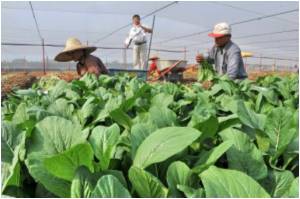
The call is made by scientists of the Institute of Tropical Medicine Antwerp and their colleagues of the Tanzania Food and Drugs Authority and Gent University. Until now, not much attention was paid to mycotoxins in food (mycotoxins are toxins produced by fungi) – with the exception of aflatoxin, of mouldy nuts ill fame. But their research in rural Tanzania does connect fumonisin with stunting and underweight. It is the first time anybody establishes this association.
Worldwide, 1 child in 3 suffers from growth retardation and 1 in 4 is underweight. The problems of stunting and underweight are associated with over 5 million deaths of children less than 5 years annually. 70% of these deaths are concentrated in sub-Saharan Africa and South Asia. Malnutrition is implicated in the majority of these deaths.
Already in 2004, the same researchers reported that improving the nutritional quality of complementary foods does not reduce stunting and underweight in Tanzanian toddlers. This raises questions about the actual management of malnutrition by international aid organisations.
So the research team went looking for other possible causes of poor growth as soon as breastfeeding falls off and maize porridge is introduced. They knew aflatoxin, the most notorious mycotoxin, had been observed to impair child growth in Benin and Togo. So they explored for other fungal toxins that could end up in maize based complementary foods.
They observed that children of twelve months, who through their corn flour based complementary food were exposed to fumonisin above the WHO maximum tolerable daily intake (2μg/kg body weight), were significantly shorter and lighter than their counterparts.
Advertisement
Advertisement














